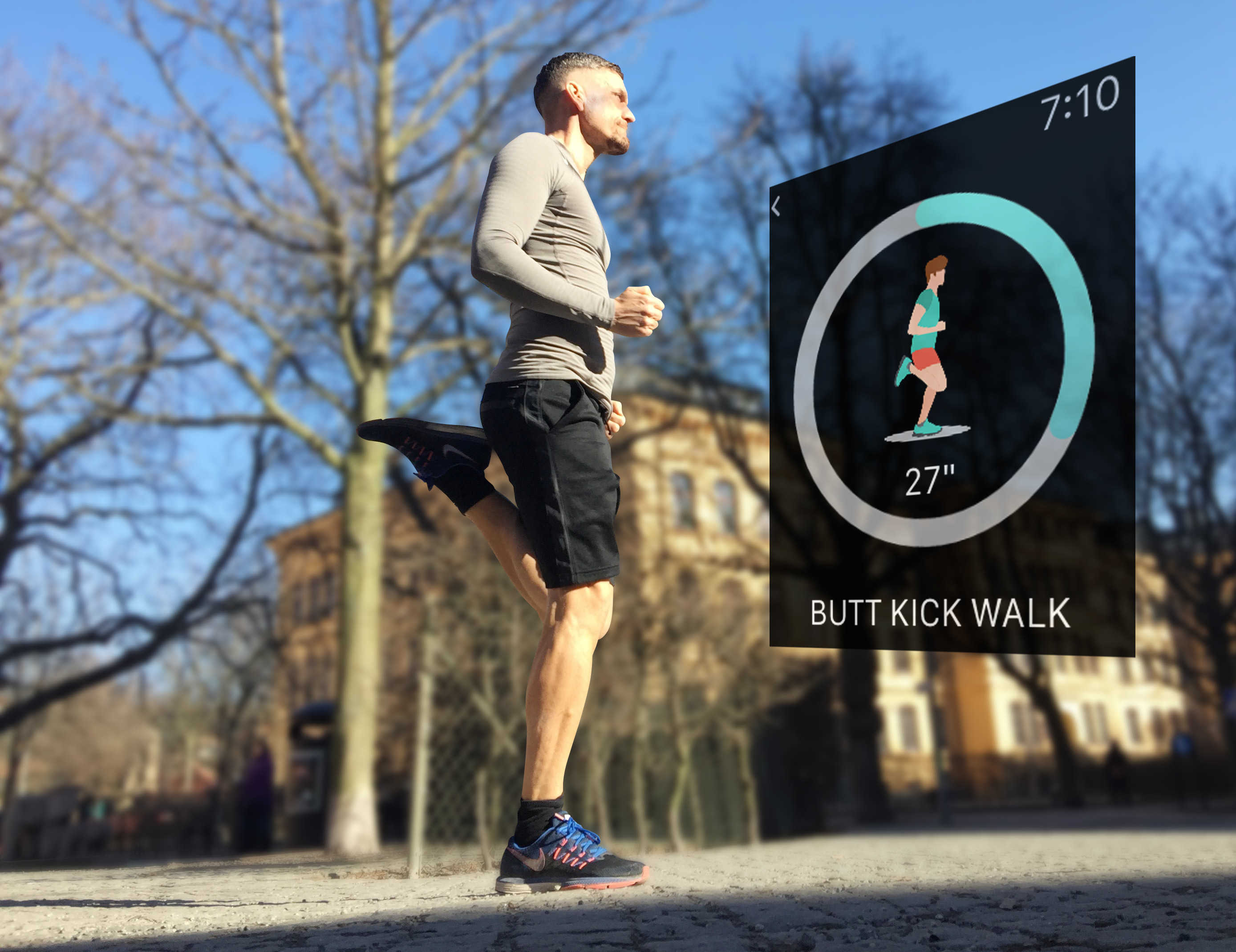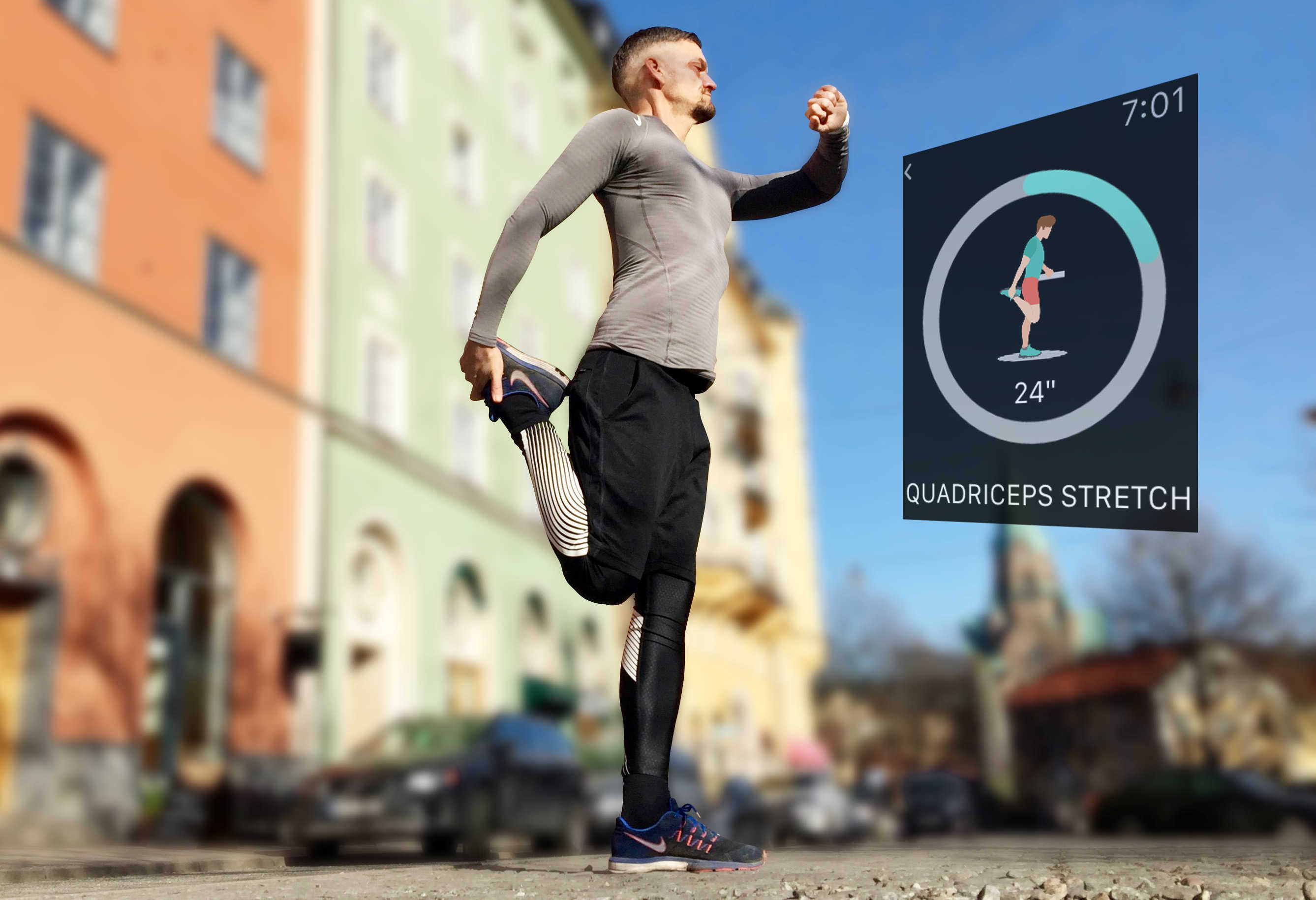When you start a workout, Apple Watch only gives you a three-second countdown. There’s no time for a warmup first. And when you’re done, the Workout app does not prompt you to cool down either.
That is very different from the treadmills and bikes you find in most gyms, which ease you gently into your workout and steadily lower your pace at the end.
Apple Watch may not (yet) support the warmup and cool-down phases of a workout, but that does not mean you should skip them. These Apple Watch fitness tips will help you get the most out of your workouts.
A legal performance enhancer
The idea behind warming up is that it reduces your risk of injury while increasing your performance. In other words, it helps you run or cycle faster without getting sore muscles afterward.
If you want to take care of a car’s motor, you don’t rev it hard immediately after a cold start. And the same goes for your body’s engine: your heart. A warmup gently raises your heart rate, giving it time to adjust before you start more intense exercise.
That’s the theory, anyway. In practice, if you get your warmup wrong, it can actually do more harm than good. The secret is to know exactly what to do and when to do it.
Apple Watch fitness tips: The right way to warm up
During a warmup, you should aim to raise your pulse to around 50 percent to 60 percent of your maximum heart rate, for five to 10 minutes. This is known as the “warmup zone,” and a brisk walk or a slow jog should increase your heart rate sufficiently. (Find more details on calculating your maximum heart rate with Apple Watch here).
So for example, if your maximum heart rate is 190 beats per minute, during a warmup you should aim to get it to 190 x 0.5 = 95 bpm.
Some runners’ watches, like the TomTom Cardio, display your heart rate while you are warming up. Unfortunately, the built-in heart rate monitor in your Apple Watch does not activate until after you start a workout. Which is a shame, because it is useful to check your heart rate while you are warming up to make sure you are in the right zone.
To do this with Apple Watch, you have to come out of the Workout app and use the Heart Rate Glance instead. Alternatively, you could just start the Workout when you begin your warmup. The trouble with this approach is that, since you go slower during a warmup phase, it brings down your overall pace in the workout summary at the end. But you can still check the pace of each stage of your workout in the Splits view in the Activity app on your iPhone afterward.
After you get used to doing warmups, you’ll know intuitively what 50 percent to 60 percent of your maximum heart rate feels like, so you won’t need to check it so regularly.
RAMPing up your workout
Raising your heart rate is the most important part of a warmup, but there is more to it than just that. Personal trainers and athletics coaches use a mnemonic called “RAMP” to remember the four key aspects of a good warmup:
– Raise your heart rate and body temperature
– Activate your muscles
– Mobilize your joints
– Prepare yourself for higher-intensity exercise
If your workout involves running or cycling, raising your heart rate will usually involve activating the muscles you are going to be working: your legs. But if you are doing weightlifting, which targets specific muscles with heavy loads, you should give those muscles a targeted warmup first as well by starting with light weights.
Mobilizing your joints is best done right at the start of your warmup, before you even start raising your pulse, to check that everything is working properly. Slowly move your arms and legs around, paying attention to your shoulders, elbows, hips, knees and ankles. Take care to move each joint through its full range of motion, from completely flexed to fully extended.
Warmup apps for Apple Watch are not that hot right now
Ideally, there would be some handy third-party Apple Watch fitness apps to help you warm up. But currently the selection on the Watch App Store is not great. Of the few warmup apps available, some are poor quality, with incorrect diagrams, mislabeled stretches and a lack of variety in routines. So I would advise caution before trusting an app for this.
One promising app I have found is RunnerStretch. It is simple and easy to use, with a Watch app that shows diagrams of each warmup exercise as you do it, together with an on-screen timer. There are currently only four routines available: a warmup and cool-down program for 5K and 10K runs. Oddly, however, RunnerStretch does not currently use the Watch’s Taptic Engine to let you know when it is time to switch exercises, and there are no text instructions to accompany the diagrams.
There is certainly room for improvement, but RunnerStretch is free, and it’s the best Watch warmup app I’ve found so far.

Photo: Graham Bower/Cult of Mac
To stretch or not to stretch?
Stretching can be a great way to impress people around you, by making yourself look like a serious runner who knows exactly what you are doing. You often see runners in the park bending down to touch their toes or pulling an ankle behind their backs. The trouble is, there is now plenty of evidence to suggest that this kind of “static” stretching before a workout actually does more harm than good. It can reduce your performance and even increase your risk of injury.
So does that mean you can skip stretching during your warmup altogether? Not so fast. While static stretches are a definite no-no before a workout, dynamic stretches help to prepare your muscles and joints for higher-intensity exercise.
A static stretch is one that you hold for several seconds. In contrast, dynamic stretches involve movement, where you move joints through the full range of comfortable motion. There are a wide variety of dynamic stretches you can use, and they are normally tailored to the particular kind of exercise you will be performing. RunnerStretch, for example, includes arm swings and leg swings, which are similar to the motion of running, and thus are ideal to prepare your muscles for a run.
My guilty confession: I often skip warmups
In the interest of full disclosure, I should confess that I rarely warm up before I start a run. I feel a bit guilty about this, because it is like blasphemy in fitness circles to skip a warmup.
Am I crazy? Perhaps. But warmups are most important if you are not used to exercise, if you are cold or if you are going to be doing intense exercise. If, like me, you exercise regularly at a fairly slow pace in a reasonably warm climate, you might get away with a shortened warmup phase. In my case, I start my runs fairly slowly and steadily build up my pace over the first few minutes. That is usually all the warmup I need.
It takes a bit of trial and error to find out what is sufficient warmup for your fitness level and the type of exercise you are doing.
Time to cool down
It may seem a bit counterintuitive at the end of your workout to do some more exercise to help you recover from the exercise you just did. But that is exactly what the cool-down phase is all about.
If you abruptly stop an intense workout, this can result in blood pooling in your legs. While you are exercising, your muscles need more blood, so your heart pumps harder to supply it. The contraction of the muscles helps to return the blood back to your heart.
But if you suddenly stop exercising, there are fewer muscle contractions to help the blood return. If you are otherwise healthy, your system will adjust over time to the sudden end of a workout, but it can be uncomfortable and may even make you feel faint for a while.
The solution is to gradually reduce the intensity of your workout at the end. For example, you could do a slow jog or brisk walk — your aim is to get your heart rate down to the warmup zone of 50 percent to 60 percent again, and keep it there for about five minutes. You can keep your workout running on your Apple Watch during the cool-down phase to monitor your lowering heart rate.
Interestingly, the rate at which your heart rate returns to normal is a good indicator of your current fitness level. As you do more exercise and get fitter, you’ll find that your heart rate drops back to normal much more quickly. (This is something the TomTom Cardio measures, giving you praise for an “excellent recovery.”)
The final stretch
When you’ve finished your cool-down, it is a good time to do those static stretches.
Exercise can result in muscles becoming stiff. For example, if you run regularly, you might suffer from tight hamstrings. Static stretches can help lengthen your hamstring muscles, increasing the range of motion in the hip, which in turn can help improve your running style. Typically you will want to hold stretches like these for around 30 seconds — and the Timer app on your Watch is ideal for letting you know when you’re done.
If you are not familiar with stretching, it is a good idea to invest in a session with a qualified running coach or personal trainer who can show you how to do it effectively and safely.
Apple Watch could do more to help beginners
When you compare Apple Watch to dedicated running and cycling watches, it looks pretty basic in terms of functionality. Some people argue that this is because it is for beginners and that any athletes will use a specialist watch anyway.
That may be true, but beginners are precisely the type of runners who would most benefit from help with warmups and cool-downs. That’s why I would like to see Apple add support for these essential workout elements in the next watchOS update.


